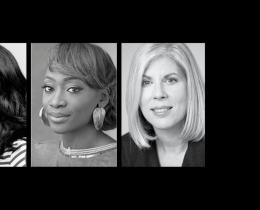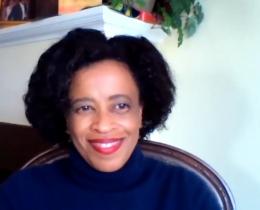Women of color are the most likely demographic to earn poverty wages because of conscious and unconscious social biases, personal confidence gaps, and an overall lack of opportunities. There is ample data focusing on the challenges women at large face in the workforce, but there is glaringly limited discussion about how it relates to challenges women of color face. Awareness of these factors on all sides is crucial in creating change.
These were facts raised by the Women's Leadership Alliance (WLA) of the Dutchess County Regional Chamber of Commerce in the introduction to their panel discussion, Concrete Ceiling: Challenges Women of Color Face in the Workplace at the Boardman Road Branch Library in Poughkeepsie, New York.
Organizer Dr. Lubna Somjee encouraged everyone to action, saying, "This issue is persistent, pervasive, and quiet. Let's start a conversation so we can go back to our institutions and make some noise!"
Sarah Urech, manager of the Omega Women's Leadership Center (OWLC)—a cosponsor the event—called attention to the importance of intersectionality in her introduction. "As women take on more leadership and gain more power, we are interested in how women can use that rise in influence to be transformers of power itself—from a force that is based on domination to one based on cooperation," she said.
The event description spoke to the need for local conversation and gave a definition of the concrete ceiling, stating, "For decades people have discussed the glass ceiling—the barrier that prevents women as a group from moving up the corporate hierarchy. The concrete ceiling is an even more formidable barrier that women of color face in the workplace."
While it's true that women increasingly obtain positions at the tops of corporate and government hierarchies, these are the exceptions and are not reflective of growing equity. The concrete ceiling is an added burden for women of color, who confront additional issues such as racism, lack of role models, exclusion from networks, and a lack of opportunities to showcase a full range of skills.
The event speakers featured several women of color leaders, including Mecca Santana, Sarah Lee, Lisa Ghartey, Jen Brown, Cindy Smith, and Karla Jerry, who shared personal stories of hitting the concrete ceiling. With intimacy and clarity they illuminated how to deal with various issues, such as recognizing discrimination based on color or gender; identifying and coping with microaggressions in the workplace; increasing recruitment and retention in women of color in the workplace; and seeking professional support and mentorship.
Mecca Santana described how her uncle would say, “You’re not going to be a lawyer,” and how she was sure to invite him to her law school graduation. She attributed an abundance of job offers to her confident attitude, saying, “They’d be lucky to have me.” She also called on organizations to institutionalize a culture of diversity. "Be a place where people of color want to work and educate your workforce on implicit bias,” she said.
Karla Jerry reminded the audience, "We need diversity to serve all kinds of communities.” She shared that she focuses on knowing her own strengths and ignores discrimination by being “too busy working."
“Believe in yourself, know your self-worth. You can learn from your bad experiences and ask for support from a mentor,” she said.
Jen Brown drew a historical line tracing the United States' past of slavery to a present culture still racialized. Being from the school of “find a way or make a way,” she described part of her journey as spiritual and also emphasized the importance of believing in yourself.
"You can transcend what you are facing and find your part in difficult situations,” said Brown. She also firmly stated that white people need to take the lead to teach white people cultural literacy, and drew attention to the fact that the pathways she and her fellow panelists followed to success are not available to all.
Lisa Ghartey implored everyone to ask where the women of color are in their workplace. "Homogeneity is not good because it’s not who we are. Diversity will lend to the cohesiveness of our teams."
Sarah Lee encouraged women to talk to each other. “Preconceived notions start to wash away as you get to know people. Know employees as people, know their stories,” she said.
“Treat everyone the same, regardless of their position or role in the organization,” Cindy Smith added, suggesting one way to retain staff is through education and encouraging everyone to network.
The final advice from the panelists included finding a mentor and trusted advisor whom you can trust; to be unapologetic and tell the truth in an authentic way; and to work smart, do your homework, and be fearless.
“I learned I should be me. I am valuable. I am wonderful, even though prejudice says we need to look, act, talk a certain way,” said audience member Dr. Anesta Vannoy-Kwame, president of the Southern Dutchess NAACP Branch 2132, which will be celebrating its 50th anniversary in October.
One of the WLA’s core tenets is collaboration: "When women work together, we are stronger, more powerful, and able to sidestep potential pitfalls." The OWLC is committed to being part of ongoing discussions on how local organizations can best support women of color in the workplace in the Hudson Valley, and hopes this conversation is the beginning of many more to come.




